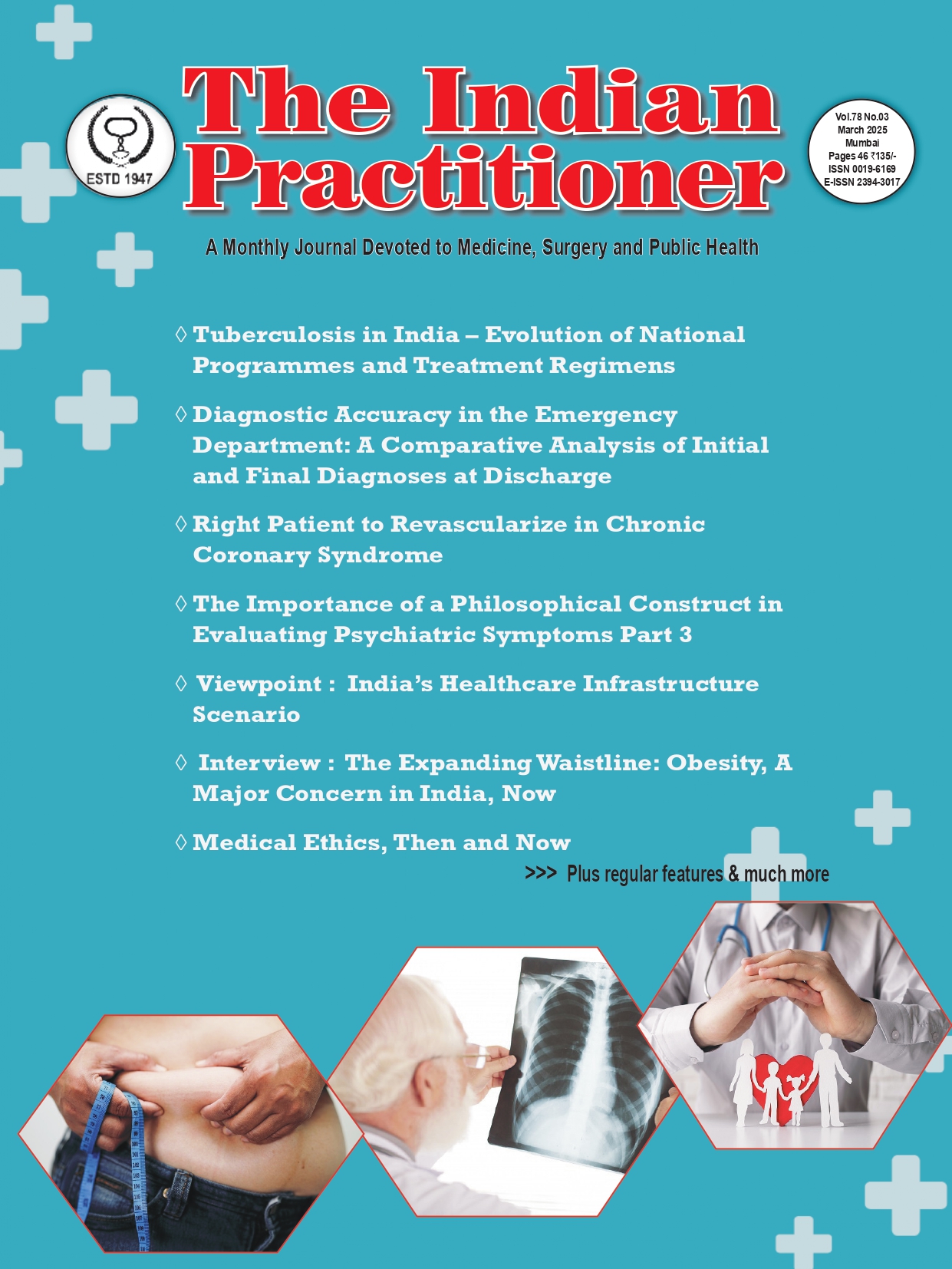Diagnostic Accuracy in the Emergency Department: A Comparative Analysis of Initial and Final Diagnoses at Discharge
Abstract
Background: The accuracy of initial diagnoses in the emergency department (ED) is crucial for optimizing patient outcomes, minimizing unnecessary investigations, and ensuring cost-effective healthcare. This study evaluates the diagnostic accuracy of the ED by comparing the provisional diagnosis at presentation with the final diagnosis at discharge.
Methods: A retrospective observational study was conducted at an EMS of a hospital’s emergency department in Mumbai. The study included 403 patients admitted through the ED for 1 month duration. Cases were categorized as a full match (complete agreement between initial diagnosis in ED and final diagnosis), partial match (some variation but within the same system), or unmatched (significant deviation between initial and final diagnosis). Statistical analysis was performed using SPSS Version 21.0 to determine diagnostic accuracy across different specialties and triage priorities.
Results:Full match, Partial match, and Unmatched cases were 215 cases (53.34%), 155 cases (38.46%) and 33 cases (8.1%) respectively. Highest diagnostic accuracy was observed in pediatrics (100%), ophthalmology (100%), and neurosurgery (80.95%).Lowest accuracy was noted in hematology (0%), vascular surgery (60%), and chest medicine (31.82%).Trauma cases had higher diagnostic accuracy (69.76%) compared to non-trauma cases (51.38%).Triage-wise accuracy: Priority 1 cases had a diagnostic accuracy of 93.15%, while Priority 3 had 28.57%.
Conclusion: A significant proportion (53.34%) of ED diagnoses were fully accurate, with an additional 38.46% being partially matched. Specialty-based variations in accuracy highlight the need for targeted improvements in certain departments, particularly neuro-medicine and chest medicine. The findings support ongoing training and quality improvement measures in-ED triage and diagnosis.
References
2. Goh SH, Low BY. Accident & emergency department diagnosis--how accurate are we? Singapore Med J. 1996 Feb;37(1):24-30
3. El-Mahalli AA, Mokhtar SA. Missed Diagnoses in the Emergency Department: A Retrospective Analysis. The Journal of the Egyptian Public Health Association. 2009;84(5-6).
4. Peng A, Rohacek M, Ackermann S, et al. The proportion of correct diagnoses is low in emergency patients with nonspecific complaints presenting to the emergency department. Swiss Med Wkly. 2015 Mar 5;145:w14121.
5. Nabi, Umer Un, Rafi, Asma, Maqbool Muzaffar, et al. Discrepancy between admission diagnosis in emergency and final diagnosis in ward and its correlation with length of hospital stay and mortality. Current Medicine Research and Practice 12(5):p 199-204, Sep–Oct 2022.
6. Fatima S, Shamim S, Butt AS, et al. The discrepancy between admission and discharge diagnoses: Underlying factors and potential clinical outcomes in a low socioeconomic country. PLoS One. 2021 Jun 15;16(6):e0253316.


